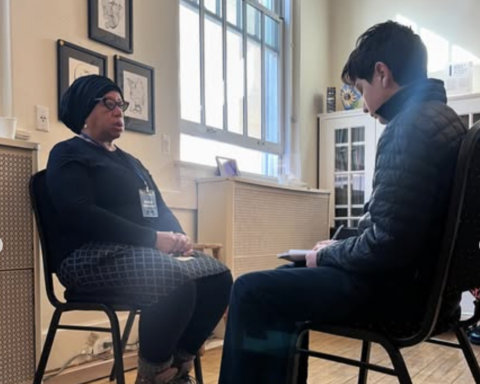When watching videos on YouTube or any average streaming channel, almost every viewer gets multiple 30-second to two-minute ads about the most random places, objects, and sometimes even people or jobs. How much of our brain processes the random makeup brand or clothing store, which, most of the time, annoyingly ruins the great moment on our favorite show or game? Are these commercials that companies spend thousands of dollars on to promote their brand actually practical for them? Or are these thousands of dollars a waste of time and money?
Coming home from a long school day, most students, like me, want to relax and put on their favorite show but… BAM. The first commercial pops up on our screen, only 30 seconds in. Don’t pay much mind to it, but of course, acknowledge that it exists. This irritating ad lasts for at least 30 seconds until this lifesaver button labeled “skip ad” pops up. Let’s say about five to 10 minutes later another ad comes on our screen, interrupting this video or show of ours. Perhaps some people would click on or continue to watch the ad, paying no mind to the fact that it could be taking time out of their day or that even the most dimwitted people on earth would not go buy whatever the product that is being advertised is. Not all people feel the same way about this topic, so these questions may leave minds with oddly puzzled thoughts and emotions.
Speaking from the perspective of a teen, who like many other people my age, doesn’t usually enjoy these commercials, I find them to be quite nonessential. They advertise things that they want us to try, use, or go to, but that don’t appeal to us. Now, from the perspective of Carolina Bassili, a woman in the advertising industry: “These advertisements can be effective, but it depends on how they are made and whether the consumer is truly paying attention to them. We are in a world where if one screen is not broadcasting what we wish to see, we go to the second one such as our phones.” As said, the amount of actual effort put into these commercials varies. Varying on how we see them in our own perspectives, because normally a really good written commercial, one in my opinion being Airbnb, just because the way they use their ads to connect with the people viewing them like when they made it showing kids as they grow up, how they won’t be able to fit in their past environments, showing things change in life. Which is what makes these commercials seem so interesting to me. But, nowadays with all this access to people always on their phones, plus, social media being pushed into empty minds, people can have a completely new perspective than what their mind could be telling them, based on the product being advertised. On social media, advertisements are mainly based on what people are watching and what they want to see. Someone who watches cat videos on TikTok wouldn’t get an ad for dog toys. This is most likely causing people to buy more from seeing what they choose to see.
Another question arises when these “irrelevant” advertisements occur on my screen. If people spend all this money on commercials––which many people would want to skip in a matter of seconds––wouldn’t it be better for that money to be spent on something useful, in a world with people who are starving and could need something to be given to them instead? Carolina states, “Sometimes, ads are worth their money and bring either awareness or more sales and consideration towards the brand. However, there are also cases of ads that did not perform as expected, and sometimes money is lost.” Commercials are the advertisement industry’s sort of hit-or-miss experience, except their entire career is on the line.
When people go through the unthinkable, the most sensible thing others care to do is help out. Knowing this, why would we be spending all this money on commercials? David Sequeira, a 12-year-old teen actor who has previously worked in the commercial industry, told me that “although a little to a lot of effort could be put into working these ads, the 100,000 to 1 million dollars put into this, in my opinion, is not worth it.” A teen actor in the action in these commercials has just about the same thought as most of the world, including me.
According to Statista, “During an April 2023 survey among adults in the United States, almost two-thirds (or 64 percent) of respondents said that they always or most of the time took action to avoid ads in free with-ad video service platforms such as YouTube. Live TV streaming services like Hulu Live and YouTube Live followed with a share of 53 percent.” These statistics help conclude that just about half the world plus around 14% can accept the claim that these commercials are pretty much a useless part of our lives.
In this world where we all have our own point of view, changing the “norm” in society daily, it’s always good to stay on trend when marketing. From split-second attention-grabbing visuals to carefully crafted narratives that work on a deeper, emotional level, commercials have evolved into an act of persuasion that brands and marketers rely on for success nowadays. An advertisement of the sort that would most likely persuade the watcher would follow what’s in trend at the moment. In the 1950s, TV ad creators found inspiration from the very popular new Barbie doll. This then led to major success for the company Mattel, which has continued on to this day. One of the commercials was featured in the blockbuster movie Barbie in 2023. New exhibits were added to museums around the world, one being the Museum of Art and Design in New York City, showcasing Barbies throughout time and adding old school TVs playing commercials that led to Barbie’s major success. The question is no longer if commercials work, it’s whether you’re bold enough to experiment with their full potential or if you’ll fade into failure overall.
Commercials were an era, an era of time when life was just simple, mainly after the rise of television in the 1950s. What made life so much simpler was the fact that there was no social media, no online stores, just you, your friends, and the small little box TV playing a commercial every 20 seconds. Now our lives have faded into what some call quite the chaotic society. We just have to accept that social media has taken over the platforms and turned our simple life into more of a hands-on and chaotic world. In the end we all have gotten what we want to buy and where we want to go. So, is this working for the world we live in at this time? The era of advertising is over. Now it’s time for these brands to wake up, and keep moving forward.
Zoe Borish is a 12-year-old aspiring journalist, who loves to cook, loves sports, will laugh at any joke, and is obsessed with the 2000’s era.







